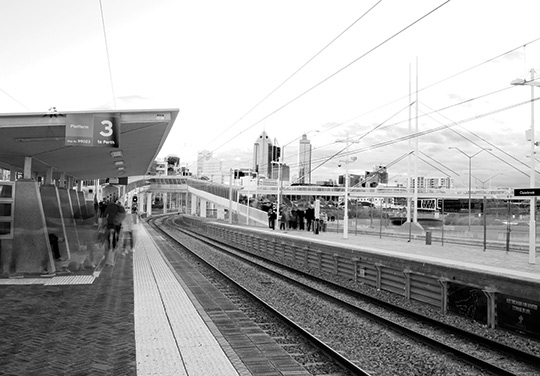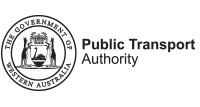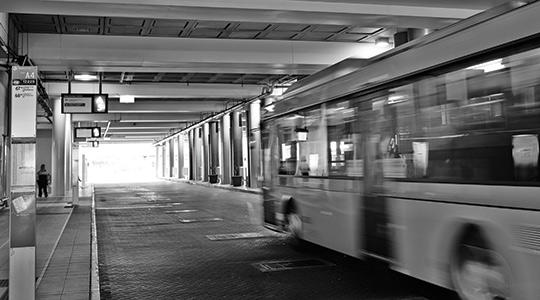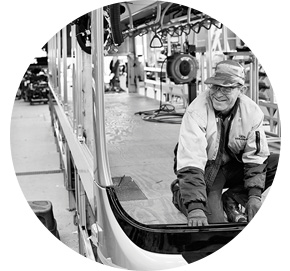
Managing Director's overview
This time last year, I pointed out that the success of a commercial organisation is generally measured in the numbers … basically, how many units did we sell, and how does that compare with last year?
The Public Transport Authority is certainly different from a fully commercial operation in that we provide a heavily-subsidised essential community service, with many passengers at concession rates or even travelling free. However, there is still a comparison to be drawn to any other transport operation.
As a member of the public transport industry, what we sell is passenger journeys. With that established, the standard rules apply: How many did we sell, and how does that compare with last year?
This year, total boardings on Transperth – the metro-area operation which does the bulk of our business and is therefore our most widely‑recognised brand – went down. The system total was 147,640,687, down 1.37 per cent from 2012-13’s 149,697,303. The downturn, the first in the PTA’s history, was entirely due to a drop in train total boardings – bus numbers actually increased slightly.
Total boardings on our urban rail system fell from 65.7 million to 63.5m. However, the year-on-year comparison is not entirely fair: There were two major, highly-publicised rail shutdowns in July and August of 2013. To accommodate some significant work in the final stages of the Perth City Link rail project, the entire Fremantle Line and the inner sections of the other lines were closed twice for about five days (including several business days, when patronage is at its highest) each time. During this time we actively suggested that passengers consider other travel options. Rail patronage was well down as a result. The full closure of the Fremantle Line was particularly telling because, as well as the usual peak numbers, this line carries a steady flow of two-way traffic through most of the day.
Though the shuts were the biggest single contributor to the downturn, we believe several other factors played a part. There was a spell of unusually inclement weather between July and September last year– a factor that we believe impacts some passenger’s decisions about whether to take public transport or make other arrangements. More significantly, there were some economic factors.
There has been less discretionary travel on our system. FamilyRider and DayRider use is down. This suggests that some passengers may have less disposable income and are choosing to stay at home or are at least being more measured in their amount of leisure activity.
As has been well documented in the media, CBD office vacancy rates are up – some major businesses shut their doors in the CBD and West Perth, largely related to changes in the mining industry cycle. As a result, the typical work day sees fewer people commuting into Perth – our bread-and-butter customers. Further, there has been a jump in the use of 24-hour SmartRiders, which are provided by Centrelink to their clients.
The train reversal broke a 10-year run of strong increases, during which time rail patronage more than doubled. Over the same period, rail also significantly increased its share of the total figure. Rail patronage in the PTA’s first full year of operation was 31.1m (and the total system was 90.6m). Even after taking into account this year’s slip, rail patronage has doubled (up slightly more than 104 per cent) over a period in which system-wide total boardings have increased by a bit less than 63 per cent. In fact, rail patronage has increased by more than 600 per cent since the system was electrified and expanded in the early 1990s. About 45 per cent of public transport trips in Perth are now made by rail, compared with 10 per cent in 1990.
The increased bus patronage in 2013-14 reflected our continued introduction of extra bus service kilometres and expansion of the fleet. It was due mainly to the launch of a number of well-patronised routes including the new 950 (the so-called Superbus which was introduced in January and is now Perth’s most frequent bus service) and a full year of Green CAT operations.
As I said last year, the take-up of public transport is increasing because it must. Road traffic congestion – and all the socio-economic and environmental issues that go with it – is a major problem all over the world. In Perth, this has been exacerbated by a period of extraordinary population growth which, though it has now slowed, has placed a strain on all public infrastructure (public transport included).
To address this, we continue to grow and improve our network. In the year under review, we upgraded more stations (mainly on the older lines, with Kenwick still a work-in-progress at June 30) and continued to expand our car parks.
In August 2013, the first of 22 new three-car B-series train sets arrived in Perth and, after final fit-out in Midland and at Nowergup, went on to the system late in the year. By June 30, a further two sets were in service. Deliveries will continue through until late 2016.





